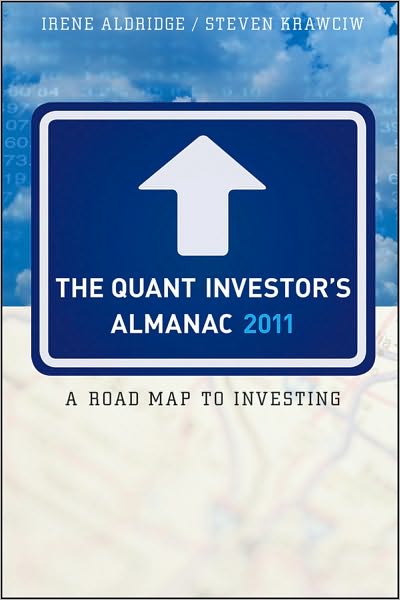Book Review: All the Devils are Here
Have you ever seen a complex array of dominoes standing, waiting for the first domino to be knocked over, starting a chain reaction where amazing tricks will happen?? I remember seeing things like that several times on “The Tonight Show with Johnny Carson” back when I was a kid.
When the first domino is knocked over, the entire event doesn’t take long to complete — maybe a few minutes at most.? But what does it take to set up the dominoes?? It takes hours of time, maybe even a whole day or more.? Often those setting up the dominoes leave out a few here and there, so that an accident will spoil only a limited portion of what is being set up.
Those standing dominoes are an unstable equilibrium.? That is particularly true at the end, when the dominoes are added to remove the safety from having an accident.
Most books on the economic crisis focus on the dominoes falling — it is amazing and despairing to watch the disaster unfold, as the leverage in the system is finally revealed to be unsustainable.
This book is different, in that it focuses on how the dominoes were set up.? How did the leverage build up?? How was safety ignored by so many?
The beauty of this book is that it takes you behind the scenes, and describes how the conditions were created that led to a huge creation of bad debts.? I was a small and clumsy kid.? My friends would say to me during sports, “There are mistakes, but your error was so great that it required skill.”
The same was true of the present crisis.? There were a lot of skillful people pursuing their own private advantage, using new financial instruments which were harmless enough on their own, but deadly as a group.? So what were the great financial innovations that enabled the crisis?
- Creation of Fannie and Freddie, which led to an over-issuance of mortgages.
- Securitization, particularly of mortgages.? This led to a separation between originators and certificateholders. (And servicers, though the book does not go into servicers much.)
- Having parties that guarantee debt, whether GSEs, Guaranty Insurers, the Government, or credit default swaps [CDS]
- Loosening regulations on commercial banks, investment banks and S&Ls.
- Regulatory arbitrage for depository institutions.
- Loose monetary policy from the Federal Reserve, together with a disdain for regulating credit.? They saw Mexico and LTCM as successes, and thought that there was no crisis that could not be solved by additional liquidity.
- Bad rating agency models, and competition among rating agencies to get business.
- Regulators that required the use of rating agencies for capital modeling.
- The broad, misinformed assumption that real estate prices only go up.
- The creation of Value-at-risk, a risk management concept that has limited usefulness to true crisis management.
- The creation of CDOs that did not care for much more than yield.
- The development of synthetic CDOs, which allowed securitization to apply to corporate bonds, MBS, and ABS not owned by the trusts.
- The creation of subprime loan structures, where are that was cared for was yield.
- The creation of piggyback loans, so that people could put no money down for a home.
There are no heroes in this book, aside from tragic heroes who warned and were kicked aside in the hubris of the era.? Goldman Sachs comes out better than most, because they saw the crisis coming, and protected themselves more than mot investment banks.
I learned a lot reading this book, and I have read a dozen or so crisis books.? I didn’t learn much from the other books.? In this book, the authors interviewed hundreds of people who were integral to the crisis, and read a wide variety of sources that wrote about the crisis previously.
I found the book to be a riveting read, and I read it cover to cover.? I could not change into scan mode; it was that well-written.
This is the best book on the crisis in my opinion, because it takes you behind the scenes.? You will learn more from this book than any other on the crisis.
Quibbles
They don’t get the difficulties of being a rating agency.? There is the pressure to get things right over the cycle, and get it right on a timely basis.? These two goals are contrary to each other, and highlighting that conflict would have enhanced the book.
Who would benefit from this book:
Anyone willing to read a longish book could benefit from this book.? It is the best book on the crisis so far.
If you want to, you can buy it here: All the Devils Are Here: The Hidden History of the Financial Crisis.
Full disclosure: This book was sent to me, because I asked for it.
If you enter Amazon through my site, and you buy anything, I get a small commission.? This is my main source of blog revenue.? I prefer this to a ?tip jar? because I want you to get something you want, rather than merely giving me a tip.? Book reviews take time, particularly with the reading, which most book reviewers don?t do in full, and I typically do. (When I don?t, I mention that I scanned the book.? Also, I never use the data that the PR flacks send out.)
Most people buying at Amazon do not enter via a referring website.? Thus Amazon builds an extra 1-3% into the prices to all buyers to compensate for the commissions given to the minority that come through referring sites.? Whether you buy at Amazon directly or enter via my site, your prices don?t change.




